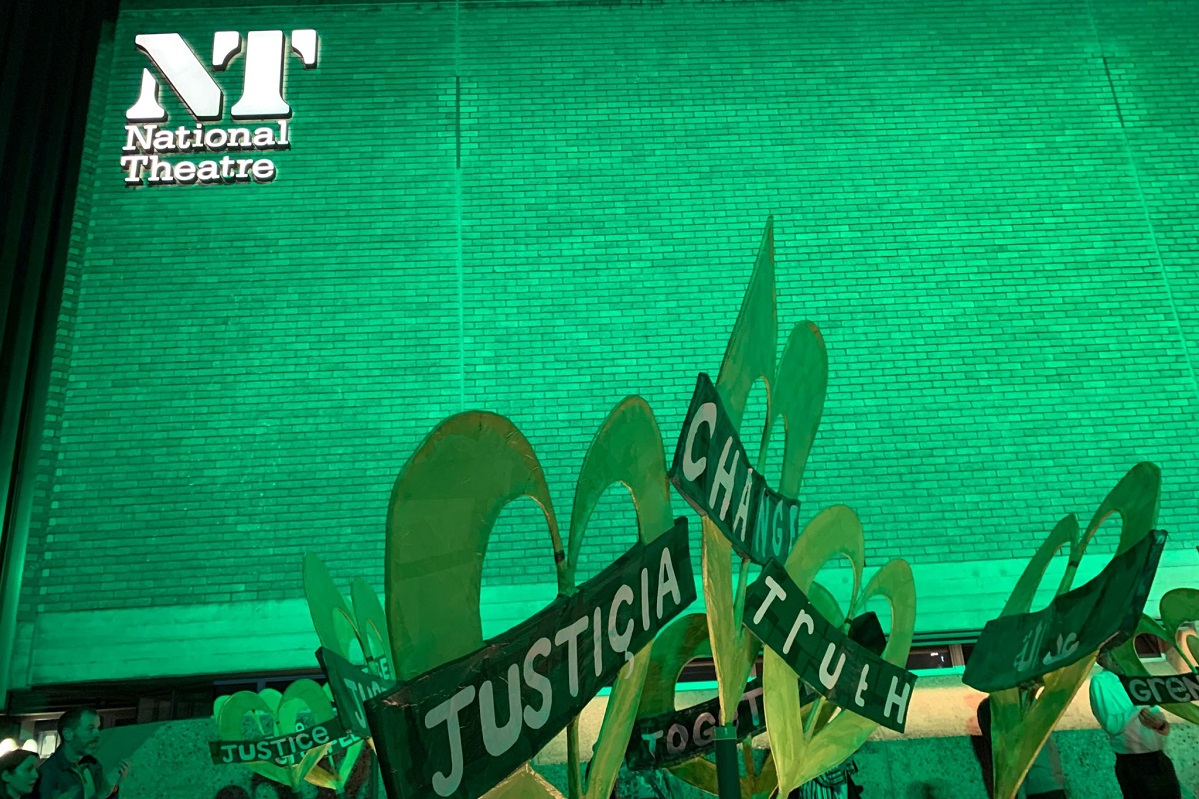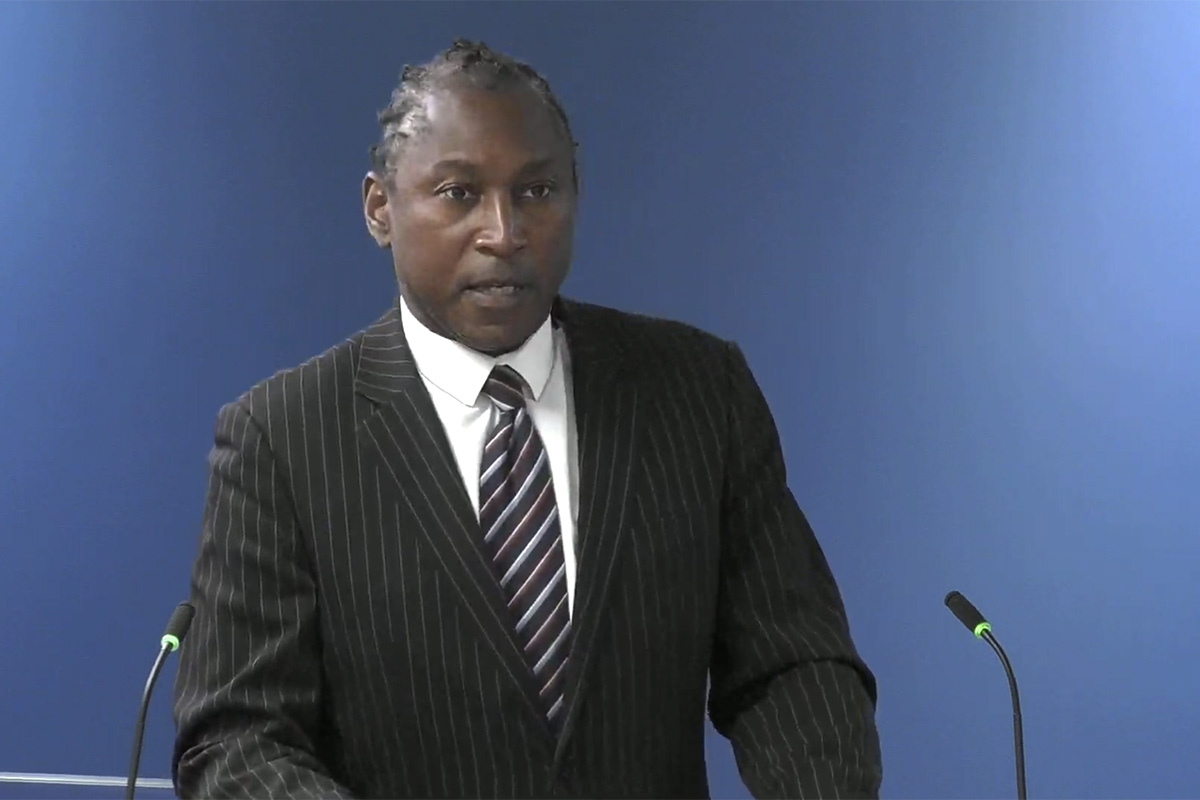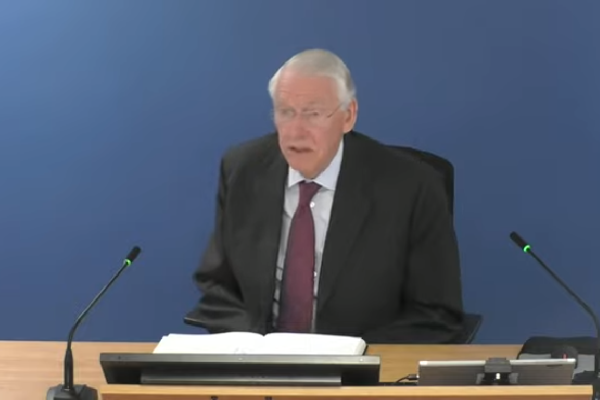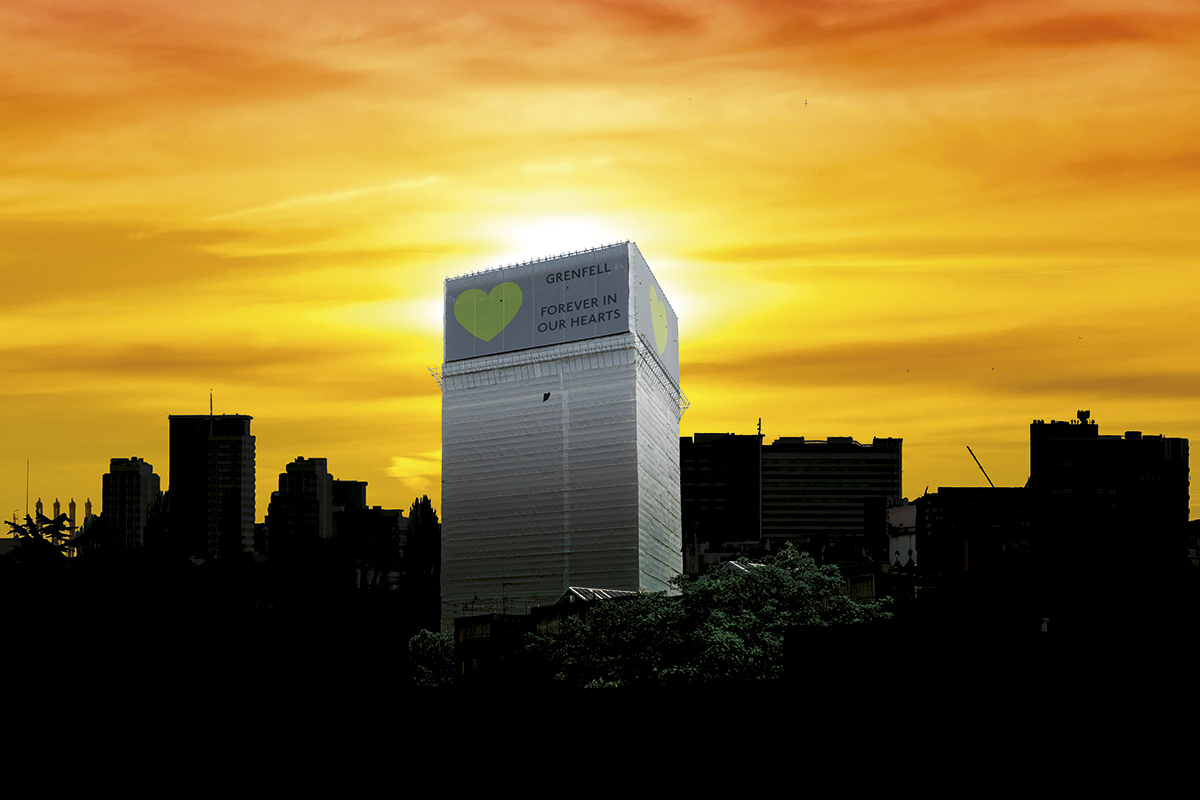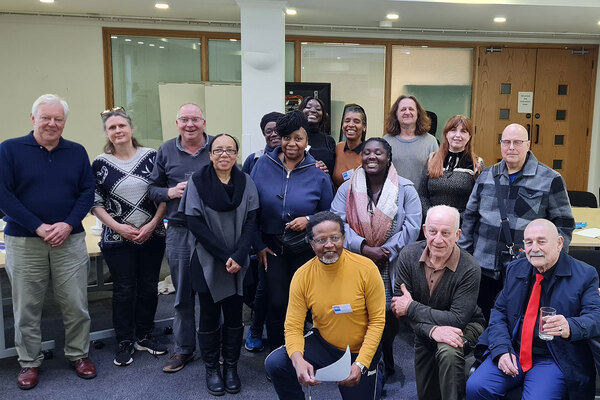The new Grenfell play delivers a heartbreaking portrait of a community betrayed as the wait for justice goes on
The new Grenfell play is a textured and heartbreaking portrayal of the community’s suffering. It is to be hoped the next time this evidence is performed in front a live audience, it is at the Old Bailey, writes Peter Apps
“Since the fire, there are people out there who have said terrible things about our community, things that are so far away from the reality of what it was actually like that it has really hurt.
“We will never have the chance to really show people what that community was like. That thought is truly heartbreaking.”
So wrote Eddie Daffarn, a survivor of the Grenfell Tower fire, in the last sentences of a 127-page witness statement recording his experiences in the years leading up to the fire.
A new play at the National Theatre – Grenfell: In the Words of Survivors – offers Eddie and nine of his neighbours the chance to give people a glimpse of what the fire has taken.
The first hour of the play is a reconstruction of life in the tower before the blaze.
In some ways, this is more an act of journalism or historical record than theatre – the script is taken verbatim from the survivors’ own words, either in interviews with the writers or the witness statements they submitted to the inquiry.
“This does act as a corrective to some of the things that have been said about Grenfell’s community in the years since”
The cast spent a long time building up the relationships necessary to make this work and their portrayals are uncanny – in some instances, disarmingly so.
This relationship of trust means the subjects of the play have opened up about their lives before, during and after the fire in a way that makes for an extraordinary, textured and heartbreaking portrayal of the community and the tragedy that befell it.
There is lightness in the opening hour: Antonio Roncolato’s heartfelt (and very Italian) paean to the city of London; Nick Burton’s description of the start of his relationship with his wife Pily; and Tiago Alves (a university student at the time of the fire) describing his memories of growing up in the tower.
It is sad that it is needed, but this does act as a corrective to some of the things that have been said about Grenfell’s community in the years since.
It also shows how little the local council understood about the community before the fire - survivor’s recollections are contrasted with a consultancy document which writes off the tower as a “blight” on the surrounding neighbourhood and proposed demolishing it.
Warm as the first hour is, it is always overshadowed by the knowledge of what is to come.
We hear Tiago’s recollection of teaching a young boy how to tie his tie on his first day of school, before the crushing realisation that the child he is describing is among the 18 lost in the fire.
As the play moves into the night of the fire, it transforms into a horror story, as the sparse stage is filled with the noise of emergency calls and radio messages and white lights represent the long, impossible-seeming journey to safety.
When pregnant mother Rabia Yahya describes the way the youngest of her three children gripped onto her as she braced to open the door and guide them down 18 flights of pitch-dark, smoke-logged stairs, you are there with her.
In the context of a disaster such as Grenfell, these small human details hit with the force of a brick. A sequence near the end when survivors recall the items they lost in the fire is particularly poignant: Turufat Yilma’s memorial box to a stillborn baby or the last photo of Maher Khoudair before he had polio.
“The play accurately depicts a response that was chaotic and dysfunctional, with serious consequences”
The play also does not shy away from the anger residents feel about the response on the night.
Discussions of the role race played in the response were controversial when they were aired at the inquiry. But here, when Hanan Wahabi explains her belief that people with minority ethnic accents were treated differently when they called the emergency services, recordings of their calls are played back – and it is hard to dispute her point.
Neither can you hear about families reached by firefighters – but told to wait for help that was simply not going to come and left alone again in flats with small children – without understanding why this is still so upsetting for their relatives.
This is not to say the play throws emergency responders under the bus. We hear from firefighters and call room operatives about the impossible situations they faced. But the play accurately depicts a response that was chaotic and dysfunctional, with serious consequences.
It also finds space for the story of wider political and corporate failings.
Excerpts from the public inquiry are short, but judiciously selected to get across reasonably well the scandal surrounding the fire testing of products by the corporations that made the materials used in the cladding system: Arconic, Kingspan and Celotex. It is particularly effective at communicating the appalling treatment residents received during the tower’s refurbishment.
An archive clip of a fresh-faced David Cameron explaining the importance of cutting red tape is suitably chilling, as one of the actors breaks character to explain how a focus on deregulation led us from a position where combustible materials were effectively banned in London to one where they became ubiquitous.
(A note – these words were actually mine. I gave an interview to the producers, with this excerpt used and a credit given in the programme notes. But this was my only involvement, and doesn’t impact on my review.)
It does need to be said, though, that this is now the third major verbatim play about Grenfell to hit the West End. There has also been a film by Steve McQueen, which used footage of the burned-out tower; a BBC drama is in the works; and several books have been written.
“All these stories feel incomplete while the community is still waiting for justice”
Art and culture have a contribution to make in helping society understand what happened, but all these stories feel incomplete while the community is still waiting for justice.
It is not the fault of this play or any of the other works on Grenfell that the criminal prosecution is progressing so slowly. Indeed, their contribution to building a wider understanding of what happened and increased empathy with those who suffered can only help.
But it is to be hoped that the next time this evidence is aired in front of a public audience in London, it is running a mile or so east from the National Theatre at Southwark Crown Court or just over Blackfriars Bridge at the Old Bailey.
This is what the play’s writer, Gillian Slovo, has said she wants to see. Her play closes with a short film that features real survivors and bereaved, who encourage the audience out into the London night to join them in their struggle for justice and change.
“We need you to see yourselves in us,” Karim Mussilhy, who lost his uncle in the blaze, says in the clip. This play is as powerful a means as you could imagine to make that happen.
Peter Apps, deputy editor, Inside Housing, and author, Show Me the Bodies
Sign up for our fire safety newsletter
Already have an account? Click here to manage your newsletters

